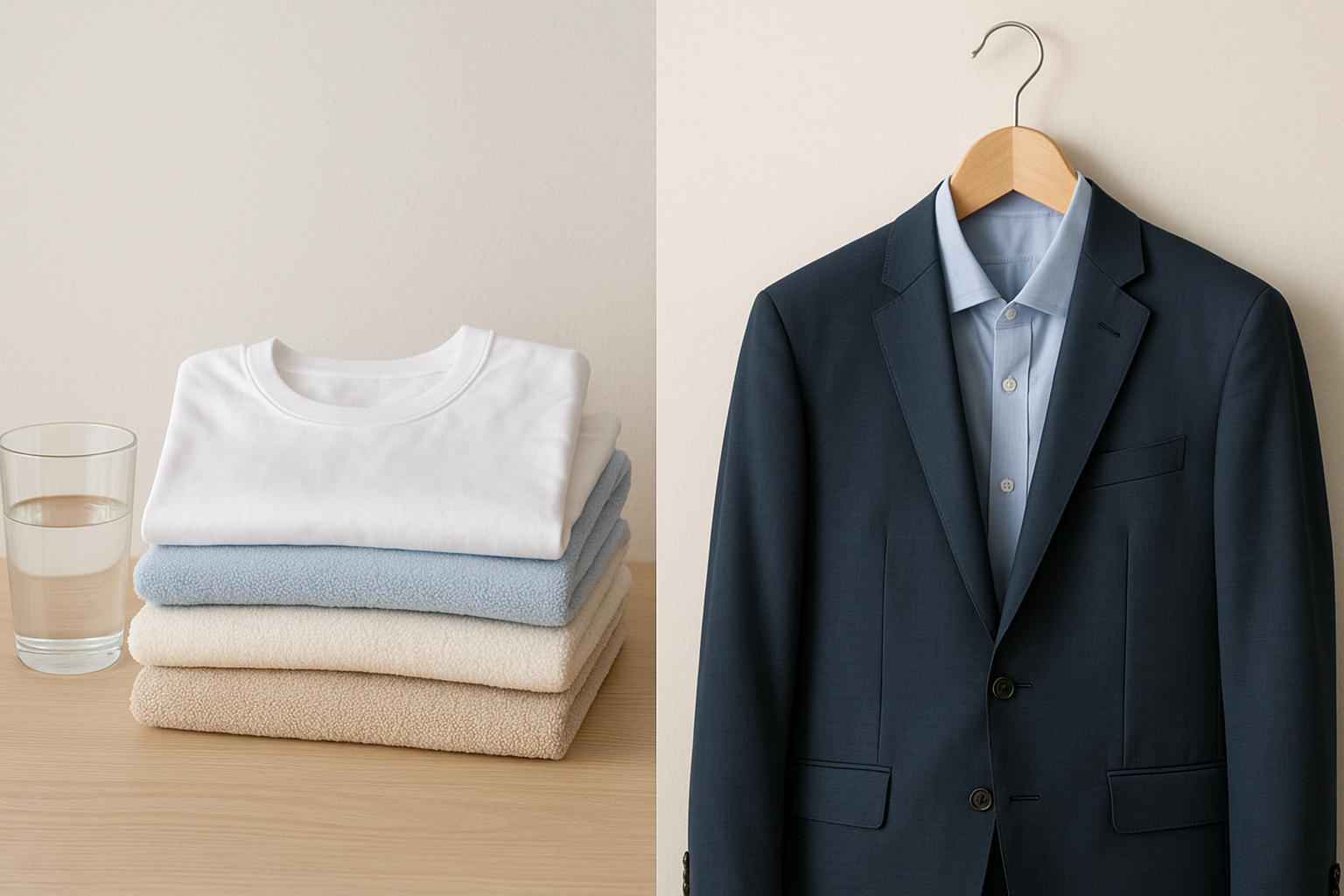
When it comes to cleaning professional clothing, hotel sheets, or even your favorite shirt, two terms often come up: laundry and dry cleaning. But what’s the difference between these two methods? And more importantly, when should you choose one over the other? Here’s an overview to help you better understand.
“A well-cared-for garment is one that lasts — and tells a story unique to each of us.”
🧺 Laundry: Washing with Water
Laundry refers to the traditional washing process with water, combined with professional detergents and, when needed, adapted temperatures.
It is the ideal method for everyday clothing and household linen.
It is particularly suitable for:
- Sheets, towels, dishcloths, tablecloths, etc.
- Durable garments such as t-shirts, jeans, cotton shirts, workwear…
The laundry is then dried, ironed, or folded according to your needs.
This method is effective, hygienic, and respectful of washable fibers.
🧴 Dry Cleaning: A Water-Free Method
Dry cleaning, despite its name, does involve washing — but without water. Instead, a specific solvent is used to dissolve stains without soaking the fibers.
This process is particularly suited to delicate textiles.
It is recommended for:
- Suits, tailored jackets, and structured garments
- Delicate dresses, materials such as silk, wool, or velvet
- Clothes with sensitive linings or embellishments
This treatment helps preserve the shape, color, and texture of delicate textiles, while ensuring deep cleaning.
🧠 How to Know Which to Choose?
The best way to know which method to use is by checking the garment’s label:
- A tub symbol indicates washing with water (laundry)
- A circle symbol means the garment requires dry cleaning
When in doubt, it’s best to ask for advice: a professional can immediately identify the safest method depending on the fabric, cut, and intended use of the garment.
♻️ And What About the Environment?
Today, modern laundries and dry cleaners are adapting to more responsible standards. Laundry washing is optimized to use less energy and fewer detergents.
Dry cleaning, for its part, is moving toward gentler solvents and closed systems to limit environmental impact.
🧼 In Conclusion
Laundry is perfect for everyday, washable items: sheets, work clothes, household linen.
Dry cleaning is essential for delicate, fragile, or precious garments: suits, dresses, and fine fabrics.
At La Blanchisserie de la Petite Suisse, every piece is treated with care, according to the method best suited for it. This is how we guarantee cleanliness, comfort… and longevity for your textiles.

.png)
.png)








.png)

